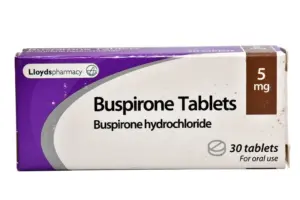Hydroxyzine is an antihistamine that works by blocking histamine receptors in the body, which helps to alleviate symptoms caused by allergic reactions. It is available in two forms: hydroxyzine hydrochloride and hydroxyzine pamoate. Both are effective for dogs, but the choice between them depends on the specific condition being treated and your veterinarian’s recommendation.
Hydroxyzine is a first-generation antihistamine, meaning it can cross the blood-brain barrier, which often leads to sedative effects. The drug’s chemical structure allows it to effectively bind to histamine receptors, mitigating allergic responses. Its ability to impact the central nervous system makes it particularly useful in managing anxiety-related conditions.
While both forms have the same active ingredient, they differ slightly in their chemical makeup. Hydroxyzine hydrochloride is more commonly used due to its quicker onset of action. Hydroxyzine pamoate, on the other hand, is often preferred for its longer-lasting effects, making it a better option for chronic conditions requiring sustained relief.
Hydroxyzine has been used in human medicine since the 1950s, primarily for its antihistamine and sedative effects. Its veterinary applications became apparent later, as practitioners recognized its potential to treat similar conditions in animals. Today, it’s a staple in many veterinary practices, valued for its dual action in treating both allergic reactions and anxiety.
Hydroxyzine is primarily used to treat a variety of conditions in dogs, including:
Hydroxyzine helps alleviate itching, swelling, and redness caused by allergies to pollen, insect bites, or certain foods. It is particularly effective in treating acute allergic reactions, providing relief from symptoms such as hives and facial swelling. For dogs with chronic allergies, hydroxyzine can be part of a long-term management plan, reducing the frequency and severity of flare-ups.
The sedative properties of hydroxyzine can help calm dogs experiencing anxiety due to thunderstorms, fireworks, or travel. It can be a valuable tool for dogs with situational anxiety, offering a temporary solution to reduce stress and promote relaxation. In cases of generalized anxiety disorder, hydroxyzine may be used alongside behavioral therapy to enhance overall treatment outcomes.
Hydroxyzine is often prescribed for dogs with chronic skin conditions like atopic dermatitis to reduce itching and discomfort. By alleviating itching, it helps prevent secondary infections caused by excessive scratching or biting. Its anti-inflammatory properties can also aid in healing skin lesions, promoting healthier skin over time.
Determining the correct dosage of hydroxyzine for your dog is essential. Dosage can vary based on the dog’s weight, age, and the severity of the condition. Always follow your veterinarian’s prescription and advice.
The typical dosage of hydroxyzine for dogs is approximately 1 mg per pound of body weight, administered two to three times a day. However, this can vary depending on the specific needs of your pet.
For small dogs, a dosage range of 10-20 mg per dose is common. It’s crucial to adjust the dosage based on the dog’s exact weight and the severity of the condition being treated. Small dogs may be more sensitive to medications, so close monitoring for side effects is essential.
Medium-sized dogs typically require 21-50 mg per dose. This range allows for flexibility depending on individual responses and the specific ailment. Veterinarians might start at the lower end of the range and adjust as necessary based on the dog’s reaction and improvement.
Large dogs generally need 51-100 mg per dose, reflecting their larger body mass. The higher dosage ensures the medication effectively reaches therapeutic levels. As with smaller breeds, observing for any adverse effects is vital, especially during the initial stages of treatment.
Below is a basic dosage chart to give you an idea of typical dosing:
| Dog Weight (lbs) | Dosage (mg) | Frequency ||——————|————-|———–|| 10-20 | 10-20 | 2-3 times daily || 21-50 | 21-50 | 2-3 times daily || 51-100 | 51-100 | 2-3 times daily |
Note: This chart is a general guideline. Always consult your veterinarian to determine the exact dosage for your dog.
Administering hydroxyzine can be done through tablets or capsules. It’s important to follow these tips for safe administration:
Before starting any new medication, consult your veterinarian to ensure it’s appropriate for your dog. Discuss any pre-existing conditions, current medications, and potential interactions. Your vet will provide a comprehensive evaluation to determine if hydroxyzine is the best option.
Adhere strictly to the prescribed dosage and schedule. Consistency is key to achieving the desired therapeutic effects. Altering the dosage without professional guidance can result in suboptimal outcomes or increased risk of side effects.
Keep an eye on your dog for any adverse reactions and report them to your vet immediately. Common side effects like drowsiness or dry mouth may appear, but severe reactions require prompt attention. Regular monitoring ensures that any issues are addressed quickly, maintaining your dog’s health and safety.
While hydroxyzine is generally safe for dogs, some may experience side effects. Common side effects include:
Drowsiness or sedation is the most frequently observed side effect due to hydroxyzine’s antihistamine properties. Some dogs may also experience dry mouth, leading to increased thirst or discomfort. Mild gastrointestinal issues, such as vomiting or diarrhea, might occur but usually resolve without intervention.
Loss of appetite can be a less common side effect, impacting your dog’s willingness to eat. Occasionally, dogs may develop a mild allergic reaction to hydroxyzine itself, presenting symptoms like itching or skin irritation. If these occur, consult your vet for alternative treatments or adjustments.
If you notice any of the following symptoms, contact your veterinarian immediately:
While mild sedation is expected, severe drowsiness or lethargy may indicate an overdose or heightened sensitivity. Dogs unable to engage in normal activities or who appear excessively fatigued require immediate evaluation.
Difficulty breathing is a serious side effect necessitating urgent veterinary attention. It may signal an allergic reaction or other complications requiring prompt intervention. Quick response is crucial to prevent further deterioration.
Swelling of the face or limbs and persistent vomiting or diarrhea can be signs of a severe reaction. These symptoms warrant immediate veterinary evaluation to prevent further complications. Rapid assessment and treatment are essential for your dog’s well-being.
Hydroxyzine is just one of several antihistamines available for treating allergies in dogs. Others include diphenhydramine (Benadryl), cetirizine (Zyrtec), and loratadine (Claritin). Each has its own set of benefits and potential side effects.
Hydroxyzine is effective for both allergies and anxiety, often preferred for dogs with severe allergies. Its dual action makes it a versatile choice, offering symptomatic relief and calming effects. However, its sedative properties may not be suitable for all dogs.
Diphenhydramine is a common over-the-counter option, widely used for mild to moderate allergies. While effective, it may cause more sedation compared to hydroxyzine, limiting its use in active dogs. Its availability and cost-effectiveness make it a popular choice for short-term relief.
Cetirizine and loratadine typically cause less sedation but may not be as effective for severe allergies. They are often chosen for dogs requiring minimal disruption to their daily activities. Their lower sedation profile makes them ideal for long-term management of mild allergies.
Your veterinarian can help determine which antihistamine is best suited for your dog’s specific needs. They will consider factors such as the severity of symptoms, your dog’s lifestyle, and any pre-existing health conditions. A tailored approach ensures optimal results while minimizing potential side effects.
Hydroxyzine is a valuable medication for managing allergies, anxiety, and other conditions in dogs. By understanding the proper dosage and being aware of potential side effects, you can ensure your furry friend receives the best care possible. Always consult your veterinarian for personalized advice and follow their guidance for administering hydroxyzine safely.
Remember, while hydroxyzine can significantly improve your dog’s quality of life, it should always be used under the direction of a veterinary professional. Consistent monitoring and communication with your vet are key to successful treatment. With the right approach, your dog can enjoy relief from discomfort and lead a happier, healthier life.
Incorporating hydroxyzine into your dog’s treatment plan can be part of a broader strategy for managing chronic conditions. Regular check-ups and adjustments to the treatment plan ensure ongoing effectiveness. A proactive approach to health management will help your dog thrive, even in the face of allergies or anxiety.
Stay informed about your dog’s health and any new developments in veterinary medicine. Knowledge empowers you to make the best decisions for your pet’s well-being. By remaining engaged and proactive, you contribute to a high quality of life for your beloved companion.



